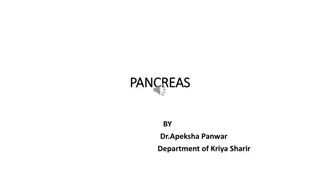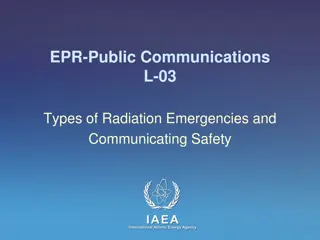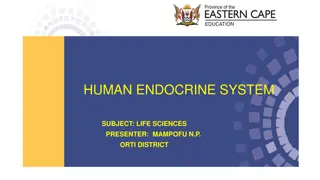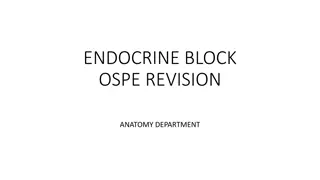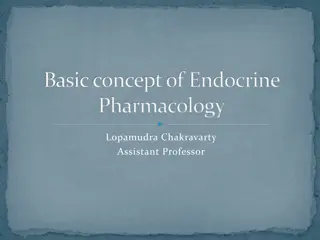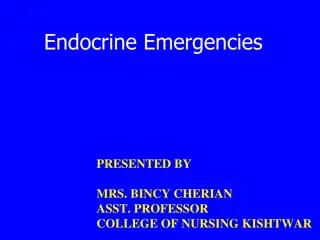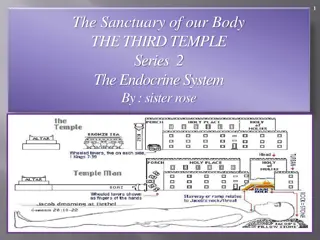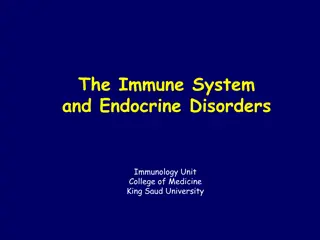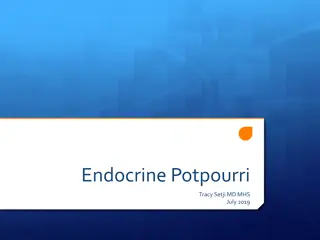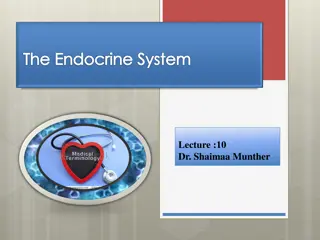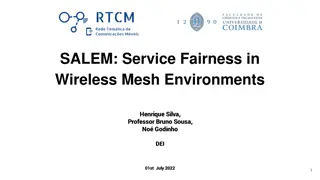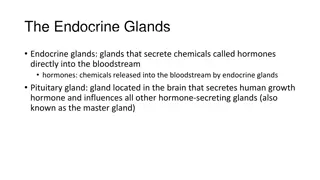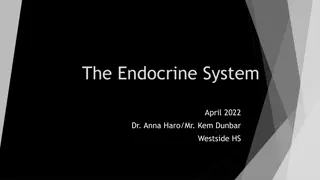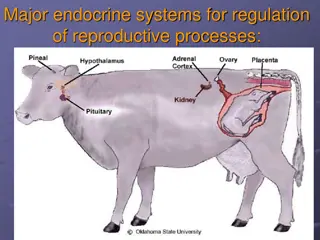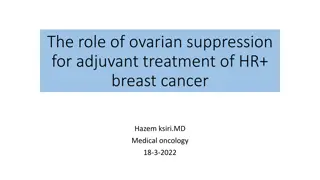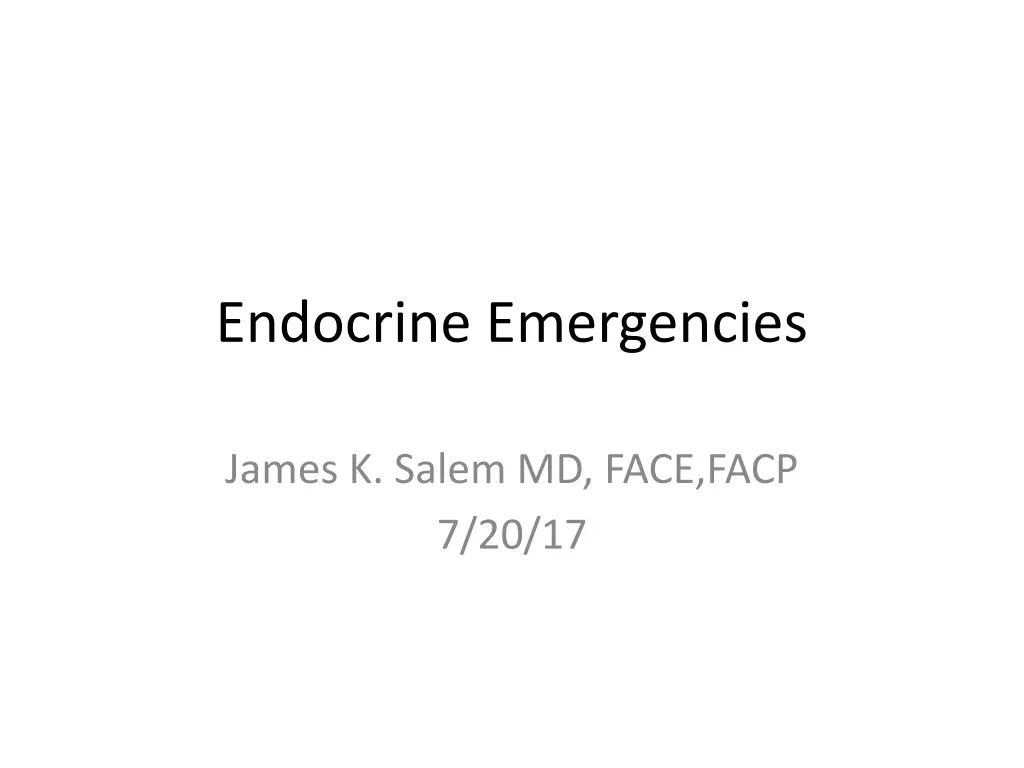
Understanding Hyperglycemic Crisis in Endocrine Emergencies
Learn about the hyperglycemic crisis conditions Diabetic Ketoacidosis and Hyperglycemic Hyperosmolar Syndrome, their impact on the population, mortality rates, pathogenesis, diagnostic criteria, and other etiologies of elevated AG. Understand the work-up process, including history, examination, and key investigations.
Download Presentation

Please find below an Image/Link to download the presentation.
The content on the website is provided AS IS for your information and personal use only. It may not be sold, licensed, or shared on other websites without obtaining consent from the author. If you encounter any issues during the download, it is possible that the publisher has removed the file from their server.
You are allowed to download the files provided on this website for personal or commercial use, subject to the condition that they are used lawfully. All files are the property of their respective owners.
The content on the website is provided AS IS for your information and personal use only. It may not be sold, licensed, or shared on other websites without obtaining consent from the author.
E N D
Presentation Transcript
Endocrine Emergencies James K. Salem MD, FACE,FACP 7/20/17
Hyperglycemic Crisis Diabetic Ketoacidosis Hyperglycemic Hyperosmolar Syndrome Combined Syndrome HHS/DKA
Hyperglycemic Crisis -Population 29 million patients with DM in US 8 million of these patients not diagnosed Increased incidence of hyperglycemic crisis admissions since 1996 Multifactorial reasons for increased incidence
Hyperglycemic Crisis Mortality declining but still significant Over 30% for combined HHS/DKA Approximately 10% for HHS DKA 5% Either HHS/DKA can present at any age
Pathogenesis DKA Imbalance between counter-regulatory hormones and insulin Glucagon Catecholamines Cortisol Growth Hormone Decreased glucose uptake, electrolyte loss, dehydration Increased Lipolysis and ketogenesis
Pathogenesis HHS Underlying illness causing increased counter- regulatory hormones Hyperglycemia Dehydration Hyperosmolarity Worsening of underlying illness
DKA Diagnosis/Criteria Blood glucose > 250 mg/dl Ketonemia (Ketonuria) Metabolic Acidosis Anion Gap pH < 7.3 Bicarbonate <18 Meq/L Mild/Moderate/Severe pH <7.3/7.24/7.0 Mild/Moderate/Severe bicarb <15/10-15/<10
HHS Criteria Blood glucose >600 mg/dl pH <7.3 Can have mild ketonemia or ketonuria Bicarb <18 Meq/L Effective Osmolarity >320 mOsm/kg Effective mOsm= blood glucose/18 + 2(Na) Nl 280 to 290
Other Etiologies of Elevated AG Starvation Etoh Lactic Acid Uremia Toxicity- salicylate, ethylene glycol, formaldehyde, paraldehyde
DKA/HHS Work Up Thorough history and Exam Should reveal etiology in majority of cases Do not assume non-compliance even if existed in past as etiology BMP/EKG/ABG/ketones/Beta HCG/CXR/Urine and Blood cultures/Troponin Can customize based in H&P Beta HCG for all potentially child bearing women
Thyroid Storm Criteria Temperature Elevation CNS effects Gi/Hepatic dysfunction Diarrhea Elevation lft s Jaundice Cardiac dysfunction Tachycardia/Chf Precipitant history Iodine ingestion, post surgery, infection
Thyroid Storm RX PTU/Methimazole Beta blockers Iodide Hydrocortisone Supportive
Adrenal Insufficiency/ICU Failure to respond to other measures should increase index of suspicion Receptor problem or central signaling Cortisol level before treatment Response should be very prompt

